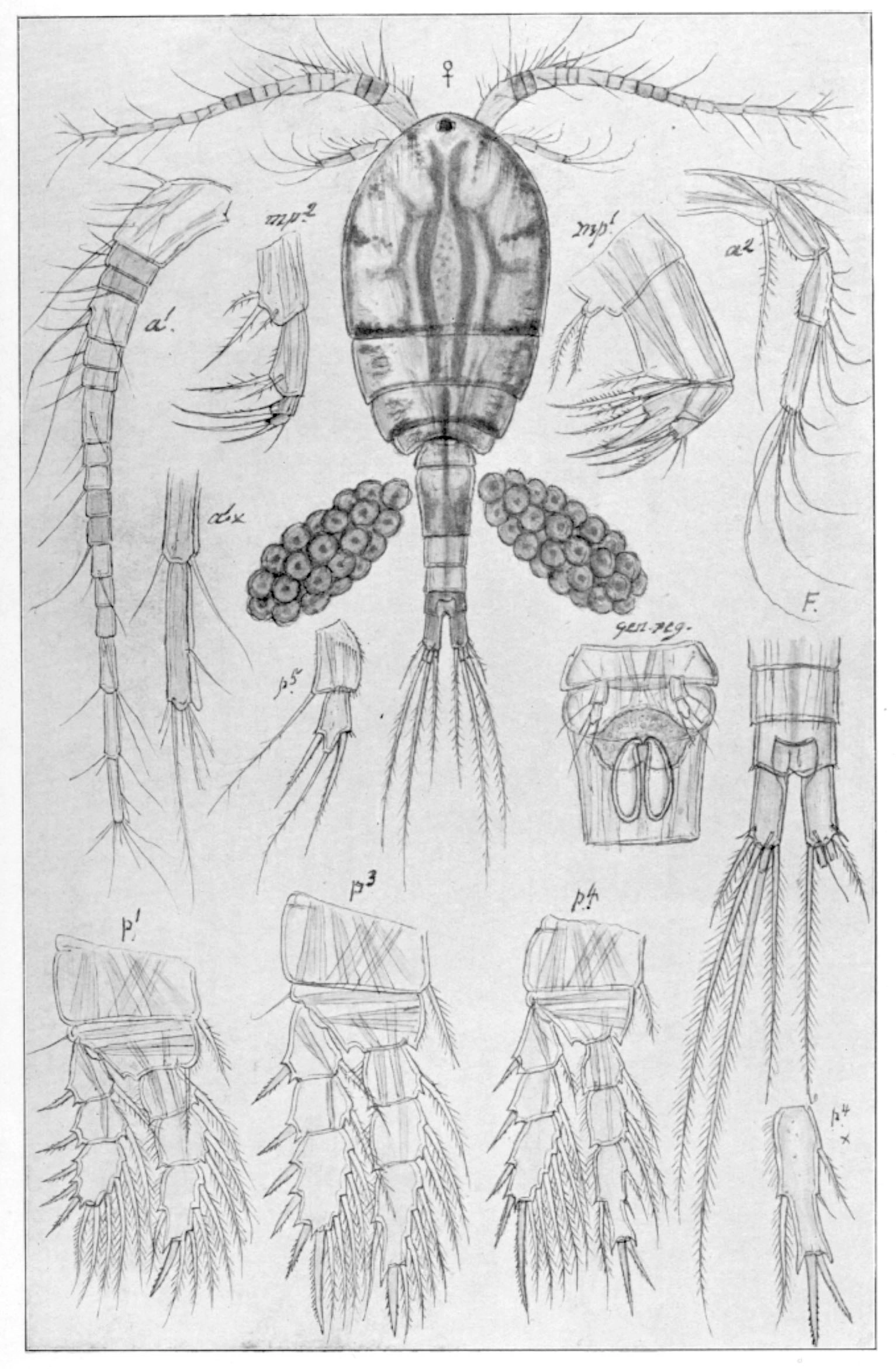Macrocyclops albidus
The two branches of the tail are relatively short, approximately twice as long as wide and the inner edge is not ciliated. This common littoral copepod is found in all parts of Norway.
Key characteristics
Macrocyclops albidus (female)
The cephalothorax of Macrocyclops albidus has an oval form with the greatest width somewhat in front of the middle. The last pair of legs (p5) in Macrocyclops sp. are easily distinguished from other cyclopoids by the long setae on the last segment. Compared with M. fuscus the tail is more slender, though the two branches are relatively short, approximately twice as long as wide. The inner edge of the two branches is not ciliated. The anterior antennae are composed of 17 joints, reaching approximately to the third segment of cephalothorax, and the last joint has a thin hyaline membrane with a smooth surface. It has a yellowish grey colour, with a more or less distinct olivaceus tinge.
Female: Length 1.7–2.5 mm
Male: Length 1.0–1.3 mm
Ecology and distribution
M. albidus is a littoral gripper/predator found in one third of the water bodies. It is found in all parts of Norway from sea level to 1444 m a.s.l. and with its highest frequency between 100 and 300 m a.s.l. It occurs in water bodies of all sizes, and seems also to be quite tolerant towards both acidity and trophy.
| Vitenskapelig navn | < 4,5 | 4,5 - 4,9 | 5,0 - 5,4 | 5,5 - 5,9 | 6,0 - 6,4 | 6,5 - 7,0 | 7,0 - 7,4 | > 7,5 |
|---|---|---|---|---|---|---|---|---|
| 7 | 25 | 31,6 | 42,9 | 43,8 | 40,4 | 53,6 | 57,1 |
| Vitenskapelig navn | < 1,0 | 1,0 - 1,4 | 1,5 - 1,9 | 2,0 - 2,9 | 3,0 - 3,9 | 4,0 - 4,9 | 5,0 - 6,9 | 7,0 - 9,9 | > 10,0 |
|---|---|---|---|---|---|---|---|---|---|
| 13,1 | 23,3 | 32,4 | 39,5 | 44 | 45,1 | 54,7 | 57,4 | 53,7 |
| Vitenskapelig navn | < 0,01 | 0,01 - 0,09 | 0,1 - 0,9 | 1,0 - 9,9 | 10,0 - 99 | 100 - 999 | > 1000 |
|---|---|---|---|---|---|---|---|
| 31,4 | 24,4 | 28,8 | 39,4 | 37,9 | 42,3 | 43,5 |
| Vitenskapelig navn | < 100 | 100-299 | 300-499 | 500-699 | 700-999 | >1000 |
|---|---|---|---|---|---|---|
| 42,4 | 51,7 | 39 | 21,2 | 25,4 | 5,6 |
Look alikes
Macrocyclops fuscus

